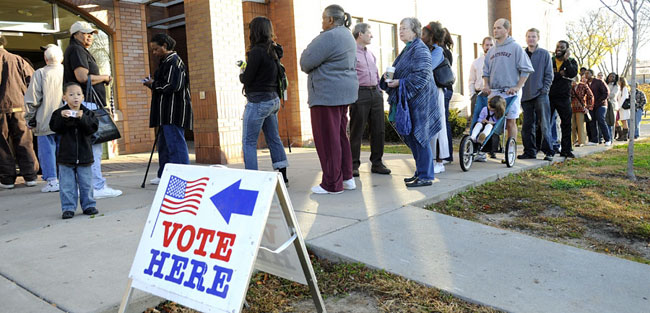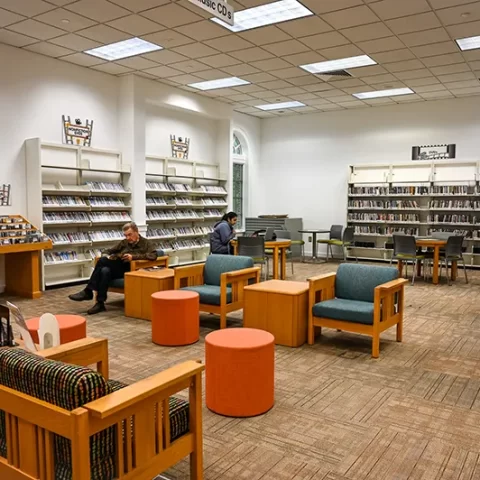In a time when voters are faced with so many daily responsibilities, voting should be made as convenient as possible. A voter’s worst nightmare is wasting time in line at the polls, especially when casting a ballot takes as long as it does to check twitter notifications.
As the 2016 election approaches, many voting districts have been looking at ways to control costs and streamline the voting process. Many election boards in Georgia have been considering district consolidation to deal with these issues at the request of Brian Kemp, Georgia’s Secretary of State. Although decreasing the number of voting precincts in a county can decrease the cost for election boards, it can actually create new problems for voters within those districts.
Franklin, Hall, Macon-Bibb and Tift counties’ boards of elections have all debated district consolidation within the last year. In Franklin County, the plan passed and the precinct number has decreased from 13 to seven. In Macon-Bibb, the idea became the topic of a heated debate as many argued that decreasing from 40 to 26 precincts would suppress the vote.
Perhaps the most dramatic example of voting district consolidation however has been debated in Tift County. In September, the local Board of Elections began talks of reducing the number of voting precincts from 12 to a single polling location for the whole county. According to the Tift County Board of Elections, “this would eliminate confusion for voters” and “would also help staff easily handle any security issues, reduce the time needed to produce election results and bring all operations on the final day of voting under one roof.”
The plan was met with a lot of opposition. “Voters were not happy with the proposal,” said Kristi Lamarca, chair of the Tift County Democratic Party. “It is pretty easy to predict that people who are used to neighborhood polling locations were opposed to having to drive or get a ride to the north end of town in order to vote.”
Under the current plan, 19,721 voters found within the 273 square miles encompassed in Tift County are spread over 12 precincts. Lamarca says that under the proposed plan, the average travel distance to the polls would almost double from eight to 15 miles. Like many rural counties in Georgia, there is no public transit system for Tift County, which would make it difficult for many voters to get to the polls.
“There are only 11 counties with single polling locations [in Georgia],” said Lamarca. Only one of these 11, Bleckley County, contains more than 5,000 voters. If Tift County were to implement this plan, it would be the largest single precinct district in the state by nearly 14,000 voters.
On September 21, the Tift County Board of Elections held a meeting to discuss the plan with voters. After this meeting, , the plan was tabled, and won’t be reopened until after the 2016 election. However, Tift County serves as a prime example of problems facing the elections process.
County Boards of Elections are trying to control both financial and logistical costs. As this continues to be an issue facing local boards, consolidations will continue to be discussed. For voters, plans like this create problems that previously did not exist. “Some of the locations are older,” said Lamarca of Tift County polling locations “but they work just fine currently.”
According to Lamarca, these talks would not have been possible without the recent ruling by the Supreme Court on the 1965 Voting Rights Act. The Court determined that key parts of the voting rights act were no longer necessary to provide free and fair access to voting. “Pre-clearance with the courts was required to make these kinds of changes,” said Lamarca “In 2013, the Supreme Court ruled that was no longer necessary.”
Almost immediately after the Supreme Court made that decision, changes to voting procedure began to take place across the country. In the two years since, many have argued that voting rights are being infringed upon. The most talked about issue has been the debate over voter identification laws, such as those being discussed in Alabama. The state recently decided to begin closing driver’s license offices to cut costs. Many argue that these closures will deny many poor, rural minorities the right to vote due to a voter ID law passed last year. Even still, voting district consolidation may be one of the biggest issues facing voters.
Consolidation, especially to the extent of Tift County’s plan would affect every voter in that district. Think about the normal inconveniences that can accompany the voting process—having to take time off work, driving or arranging transportation to the precinct, uncertainty of whether there will be lengthy wait times—and combine that with up to 20,000 people all trying to vote in one place. These factors alone would deter many voters. After all, 40% of Americans choose not to vote for inconveniences much less than this.
On a national and even state level, voter ID laws are often presented as the most pressing issue when it comes to voting rights. Yet ultimately, all politics are local and likewise, all voting takes place at the local level. And at the local level, voting district consolidation has a more immediate affect on voters.
The voting process should always be as simple and convenient for the voters, especially poor and minority voters. A process in which only those with transportation are able to get to the polls inherently favors more wealthy voters. District consolidation may save money for election boards, but in the process it creates a bigger cost for those who need their voices heard the most. It’s a cost that cannot be seen in dollar signs. Rather, this cost can only be heard in silence.
Photo: MPR News/Bill Alkofer


